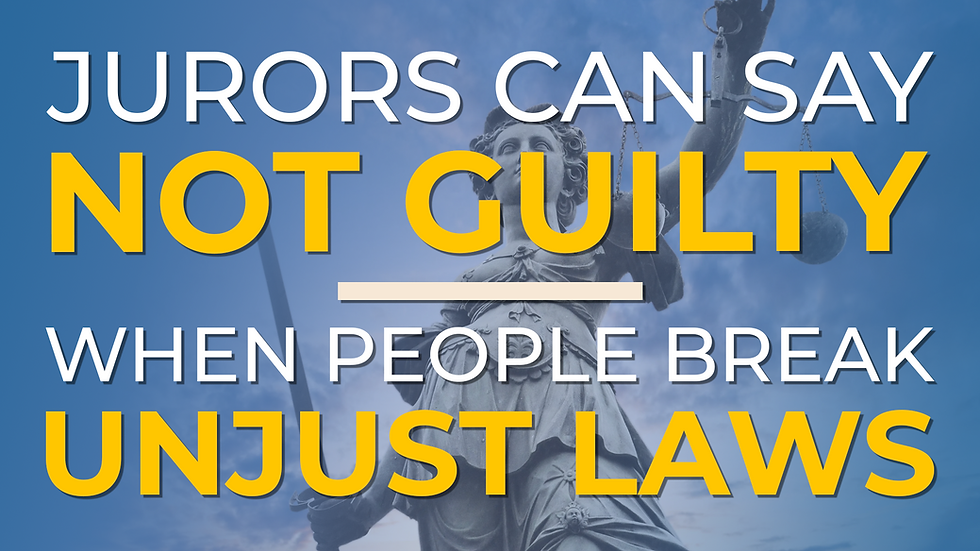The Forgotten Civil Right: Jury Nullification
- Cannabis Counsel
- Aug 7, 2020
- 3 min read
By: Julia Gilbert

In 2015, Keith Wood was arrested at the front entrance of a courthouse in Mecosta County for handing out pamphlets on jury nullification. Jury nullification occurs when a jury finds a Defendant “not guilty” despite all evidence to the contrary because they believe the law itself to be unjust. Mr. Wood was charged with and ultimately convicted of jury tampering (attempting to influence the decision of a juror in any case by argument or persuasion). The Michigan Supreme Court recently reversed his conviction in the case of People v Wood decided July 28, 2020.
However, the case wasn’t decided based on the right of jury nullification, but rather because the Court found the jury tampering statute does NOT apply to jurors merely arriving for the first day of service who have not been assigned to a case yet. If Mr. Wood had passed out pamphlets to jurors already assigned to a case, I imagine this case would have a different result.
Jury nullification is an important concept to understand for any potential juror. Mr. Wood found the pamphlets he passed out at the website of the Fully Informed Jury Association (FIJA). Their mission is to “empower[] jurors to uphold individual liberty by instilling in them a rich understanding of their protective role, including jurors’ right to refuse to enforce unjust law.” (Emphasis added). As the Michigan Supreme Court explained in People v Wood:
Jury nullification has “solid historical credentials,” the most famous case in American history being that of John Peter Zenger, who was charged, during the colonial period, by the British with criminal sedition….He was ultimately acquitted by the jury even though he had violated the law….Under jury nullification, “a jury in a criminal case has the power to acquit even when its finding as to the facts, if literally applied to the law as stated by the judge, would have resulted in a conviction.”
Zenger was accused of sedition, which is “conduct or speech inciting people to rebel against the authority of a state or monarch.” By finding him innocent, even though the evidence clearly indicated guilt, the jury was expressing their disagreement with the charge against John Zenger by the British.
Throughout American history, the people have used the right of jury nullification to thwart the enforcement of unjust laws. During Prohibition juries seldom convicted individuals for violations of the Volstead Act, the federal law banning alcohol production and sales. Anti-Vietnam War activists successfully used nullification as a defense when the Camden 28 were charged with the destruction of the New Jersey Draft Board offices.
Jury nullification has a deep history in Michigan as well. In 1855, the state passed the Michigan Personal Freedom Act in response to the Fugitive Slave Act that stripped escaped slaves of basic rights. Among other things, the Personal Freedom Act granted escaped slaves the right to jury trial, where they were almost never convicted. As a more modern, Michigan example, Dr. Jack Kevorkian was acquitted by juries three times for various charges related to assisting suicides before his eventual conviction.
It is not illegal for a jury or an individual juror to engage in jury nullification. The jury has the power to use jury nullification to dispense mercy and reach conclusions contrary to the weight of the evidence. However, the courts have said it does not have the right to do so. People v Bailey, 451 Mich 657, 671 n 10 (1996). Having the power but not the right to do it means that there is no criminal consequence for engaging in jury nullification, but juries in Michigan are not allowed to be instructed on the power they have to vote their conscience and find a Defendant not-guilty when the charge is unjust.
While jury nullification is not a crime, educating someone about it once they have been assigned to a criminal case as a juror apparently is, per People v Wood. Be an informed juror. But of course don’t break the law.




Comments